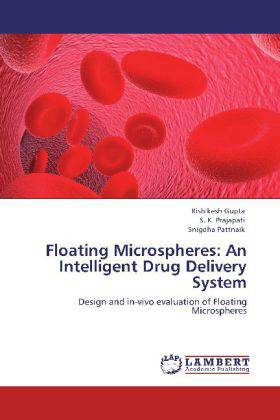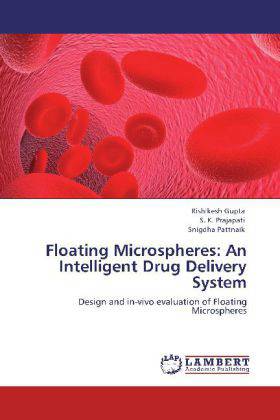
- Afhalen na 1 uur in een winkel met voorraad
- Gratis thuislevering in België vanaf € 30
- Ruim aanbod met 7 miljoen producten
- Afhalen na 1 uur in een winkel met voorraad
- Gratis thuislevering in België vanaf € 30
- Ruim aanbod met 7 miljoen producten
Zoeken
Floating Microspheres: An Intelligent Drug Delivery System
Design and in-vivo evaluation of Floating Microspheres
Rishikesh Gupta, S. K. Prajapati, Snigdha Pattnaik
Paperback | Engels
€ 63,45
+ 126 punten
Omschrijving
This book initially provides a review of floating drug delivery systems. This system has a bulk density lower than the gastric content. They remain buoyant in the stomach for a prolonged period of time, with the potential for continuous release of drug. Gastric emptying is much more rapid in the fasting state and floating systems really heavily on the presence of food to retard emptying and provide sufficient liquid for effective buoyancy. When microspheres come in contact with gastric fluid the gel formers, polysaccharides, and polymers hydrate to form a colloidal gel barrier that controls the rate of fluid penetration into the device and consequent drug release. The air trapped by the swollen polymer lowers the density and confers buoyancy to the microspheres. However a minimal gastric content needed to allow proper achievement of buoyancy. Hollow microspheres of Acrylic resins 57, Eudragit, PMAA, floating granules are the recent developments in this field. The book then presents studies conducted on producing microspheres containing Antidiabetic drug. The book also discusses various formulation and processing parameters and in-vivo study in wistar rats.
Specificaties
Betrokkenen
- Auteur(s):
- Uitgeverij:
Inhoud
- Aantal bladzijden:
- 100
- Taal:
- Engels
Eigenschappen
- Productcode (EAN):
- 9783846526415
- Verschijningsdatum:
- 20/04/2012
- Uitvoering:
- Paperback
- Afmetingen:
- 152 mm x 220 mm
- Gewicht:
- 159 g

Alleen bij Standaard Boekhandel
+ 126 punten op je klantenkaart van Standaard Boekhandel
Beoordelingen
We publiceren alleen reviews die voldoen aan de voorwaarden voor reviews. Bekijk onze voorwaarden voor reviews.







